The horse mushroom (Agaricus arvensis) is a common, widespread, excellent edible mushroom species. It looks similar to the button mushroom, which it is related to. It is called the horse mushroom because it often appears near stables, loving the manure-rich soil.
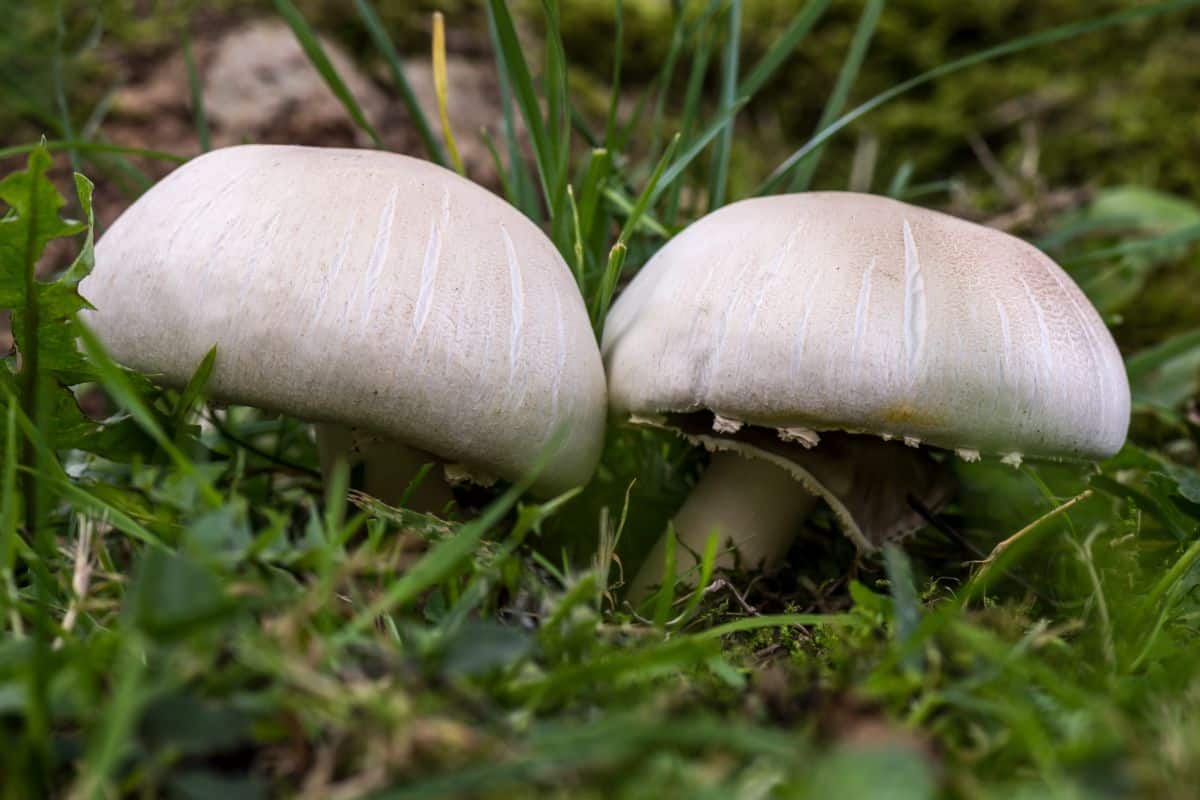
Jump to:
All About Horse Mushrooms
Horse mushrooms are a choice edible which appear in pastures, fields, and other grassy areas. They’ve been collected from all over the world, including Europe, Australia, Asia, and North America. The scientific name arvensis means “of the fields” or ” of the meadows.”
While these mushrooms are widespread and excellent eating, identifying them can get a little tricky. It is essential to pay attention to details with this one, so it doesn’t get mistaken for a toxic species. There are no seriously poisonous lookalikes, but extreme gastrointestinal distress is not something we wish upon anyone.
The history and tracking of this mushroom in North America is a wee bit complicated. It turns out one mushroom looks so similar it was lumped into the horse mushroom species without question. However, more recent analysis determines these are two different but almost identical-looking species.
Agaricus fissuratus is also widely distributed and edible, so don’t stress too much if you confuse them. It is also commonly called the horse mushroom, so the confusion continues unabated with name and appearance.
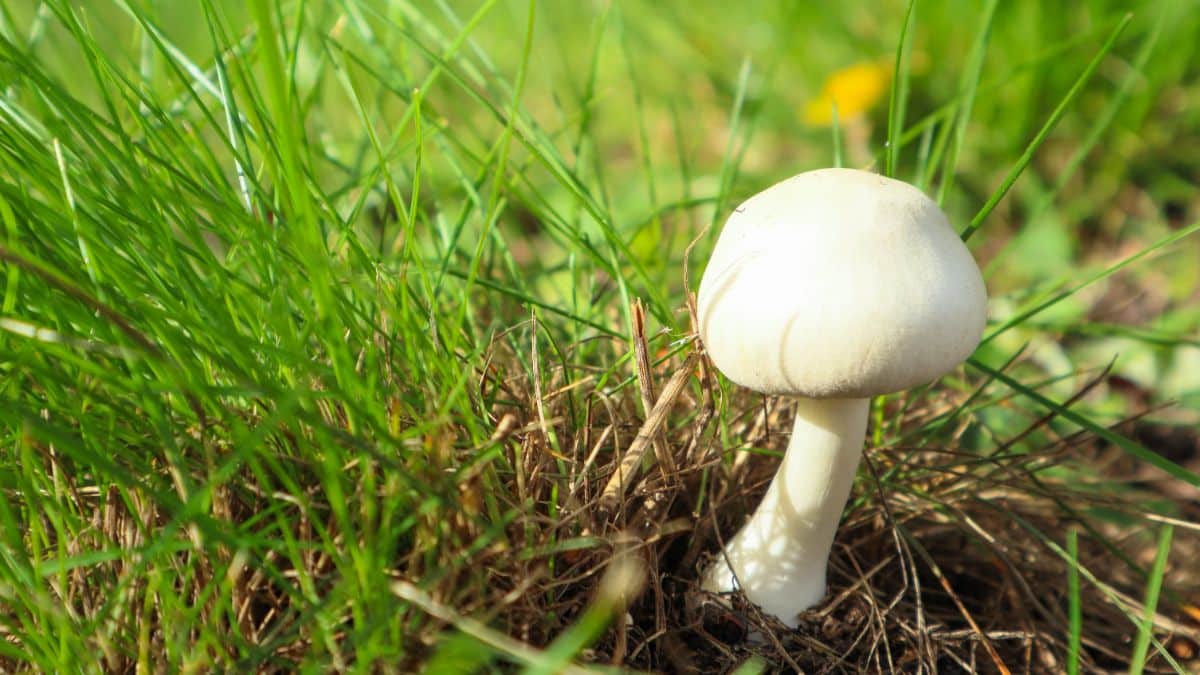
Horse Mushroom Identification
Season
Summer through fall.
Habitat
Horse mushrooms are saprobic, meaning they feed off dead and decaying organic material. They grow singularly or in scattered or dense groupings. It’s not uncommon to find them bunched together and overlapping.
This mushroom only grows from the ground; it does not grow on trees. It can be found in grassy areas, like meadows, fields, and lawns. As the common name indicates, it is also common in horse pastures, liking the rich mature there. These mushrooms often appear in fairy rings, too.
It seems to have a fondness for spruce or appreciates nutrient-rich soil, just like spruce trees.
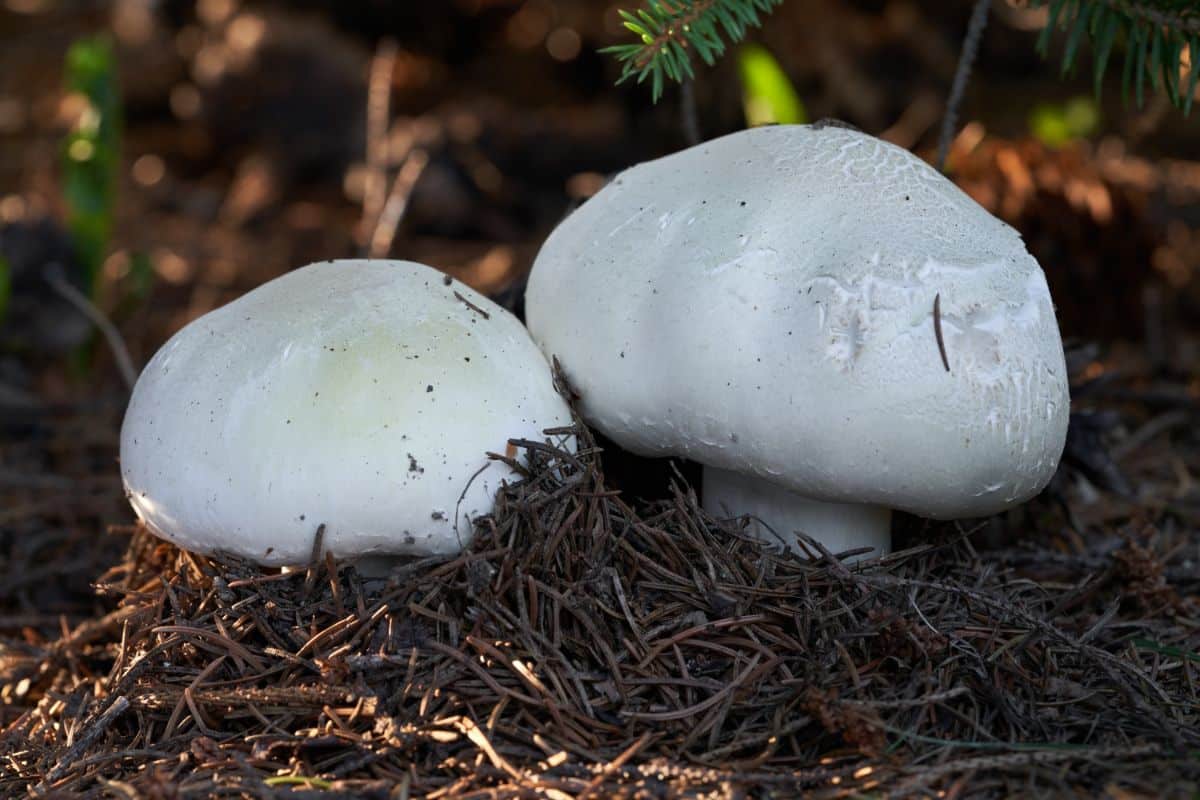
Identification
Cap
The cap of the this mushroom starts out whitish or buff but yellows slowly with age. It is smooth or has very fine fibrous scales. In youth, the mushroom cap is bell-shaped, just like the grocery store button mushroom. With age, the cap flattens out to take on a dinner plate appearance. The cap turns yellowish when handled or bruised. It ranges in size from 3-8 inches wide. Sometimes, the caps get super large, up to 12 inches wide.
Gills
Horse mushroom gills start out a pale pink, then darken to chocolate brown with maturity. The gills do not attach to the stem, and they are tightly arranged. When the mushroom is very young, in its button stage, the gills are covered by a thick white cottony fiber. This is the universal veil; it breaks apart and wears away with age, leaving only a skirt around the stem as evidence it was there.
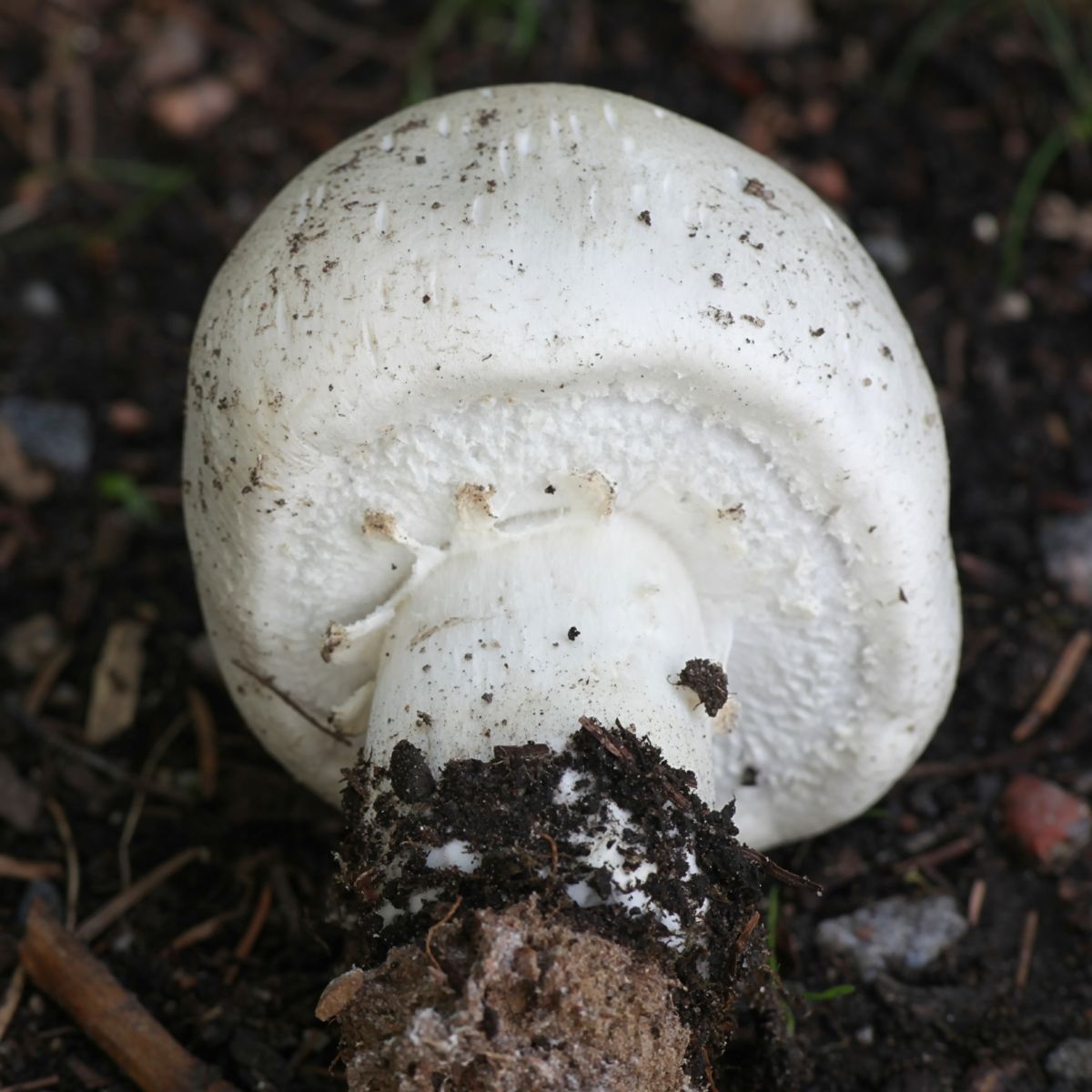
Stem
The stem is thick and white with a bulbous base. Around the top of the stem is a white skirt, a remnant of the cotton-like veil that covered it in youth. The skirt is thick and double-layered with a cog-wheel pattern on the underside. Above the skirt, the stem is smooth. Below the skirt, the stem might be smooth or covered in fine white fibrous scales.
Horse mushroom stems are solid and grow up to 4″ tall.
Flesh and Scent
The flesh of the mushroom is white and does not change color when cut, or it might turn very faintly yellowish. It smells strongly of anise but does not have a distinctive taste. The anise scent is more robust in younger specimens.
Spore Print
Dark purplish-brown
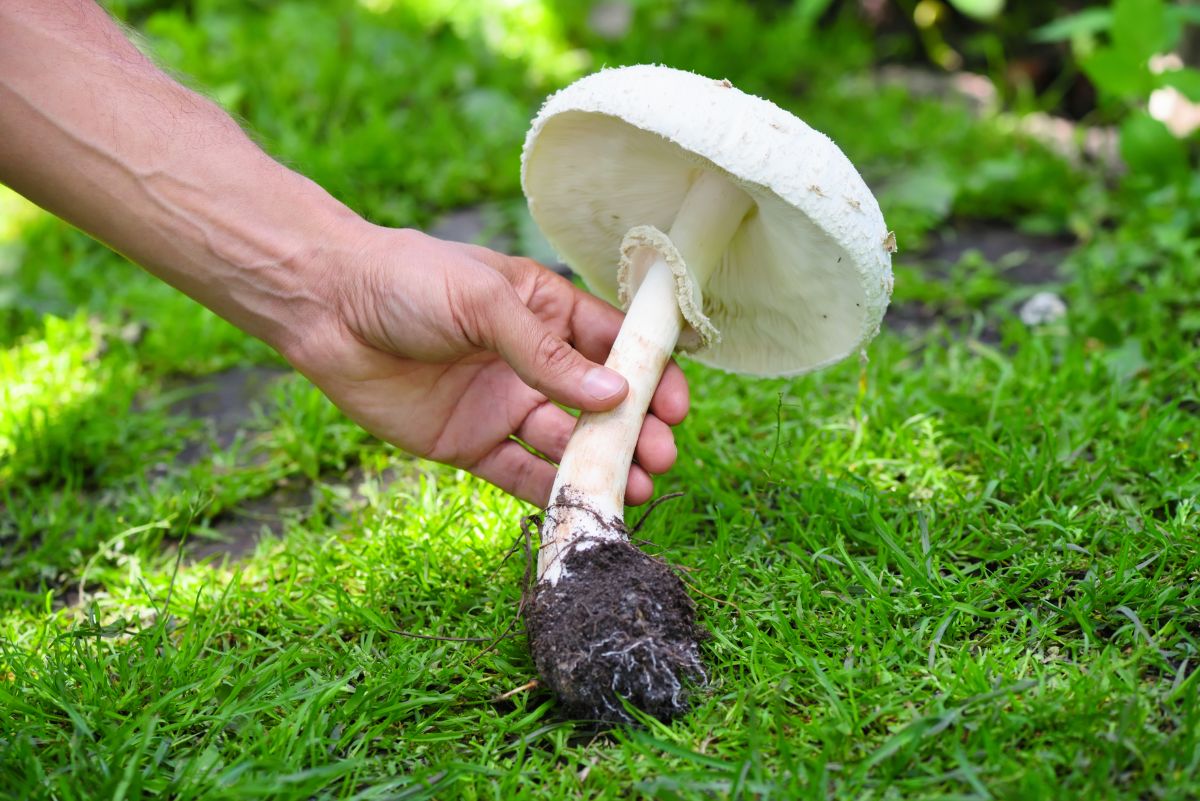
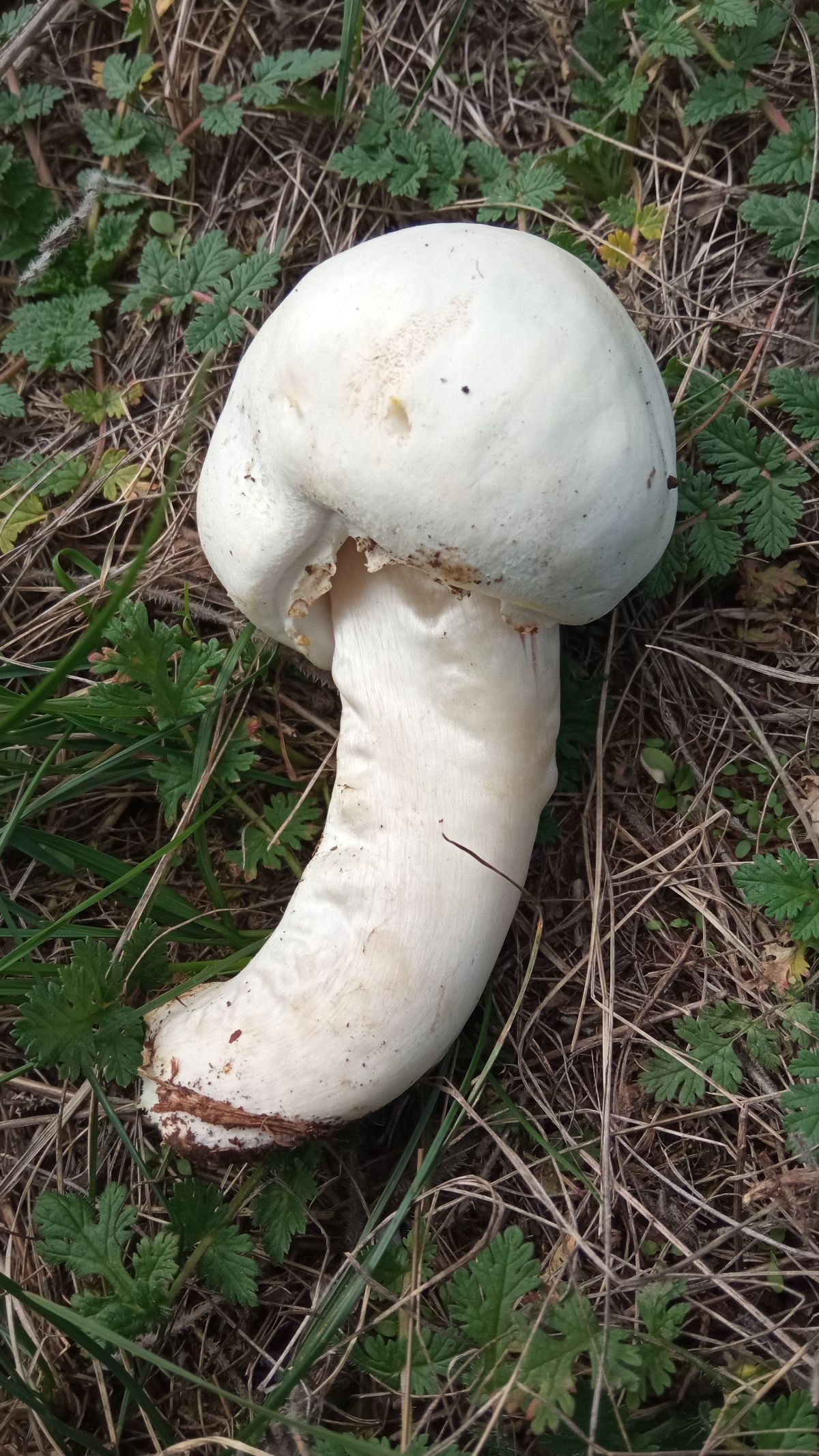
Key Identification Features:
- White or buff cap, usually smooth but sometimes with fine fibrous scales
- Bell-shaped cap that flattens out with age.
- Cap bruises yellowish when handled
- Gills are pale pink, then turn chocolate brown with maturity
- Gills are not attached to the stem.
- Gills covered by cotton-like white veil when in button form
- Stem white, thick, and solid.
- White, double-layered, thick skirt around the top of the stem.
- Skirt features a cog-wheel pattern on the underside.
- Stem is smooth above the skirt but may be finely fibrous below
- Smells strongly of anise
- Flesh is white and does not change color when cut or might turn very light yellow.
Foraging Horse Mushrooms
The substantial size and bright white coloring of the horse mushroom make it hard to miss. Growing in a grassy green field, it looks like a puffball or white floating orb in the meadow.
Look for young specimens – buttons have the best texture and flavor. They’re also less likely to be infested with bugs. Cut the mushroom stems at the base to harvest or gently pull the whole mushroom from the ground.
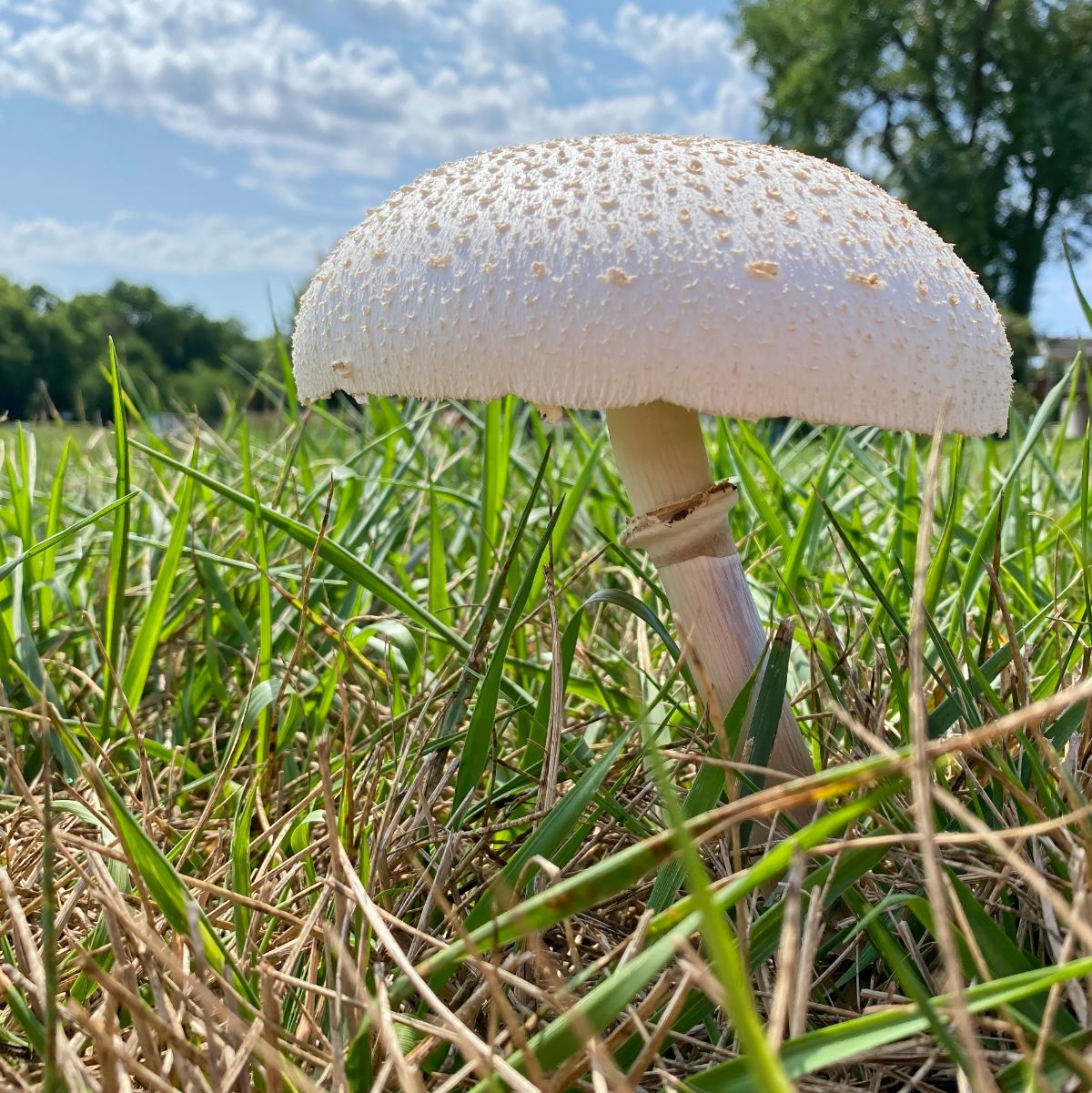
Horse Mushroom Lookalikes
There are two primary species that you should be very careful with when foraging horse mushrooms. Both have telltale signs of letting you know you don’t have a horse mushroom, but you must be attentive. In addition to the two problematic species, there are several other edible and non-edible (but not toxic) mushrooms that look like the horse mushroom.
Yellow Stainer (Agaricus xanthodermus)
At first glance, this Agaricus species looks identical to the horse mushroom. It is commonly confused, which is problematic because it is poisonous. The yellow stainer, though, has a critical feature that sets it apart from the horse mushroom. The cap and stem turn a bright yellow immediately when cut or bruised. Additionally, it smells like iodine and not anise, like the horse mushroom.
The yellow stainer causes terrible gastrointestinal distress. When cooked, it emits an intense (foul) sweet and acrid odor (phenol), so if you notice your horse mushrooms smelling terrible, you might have the wrong fungus!
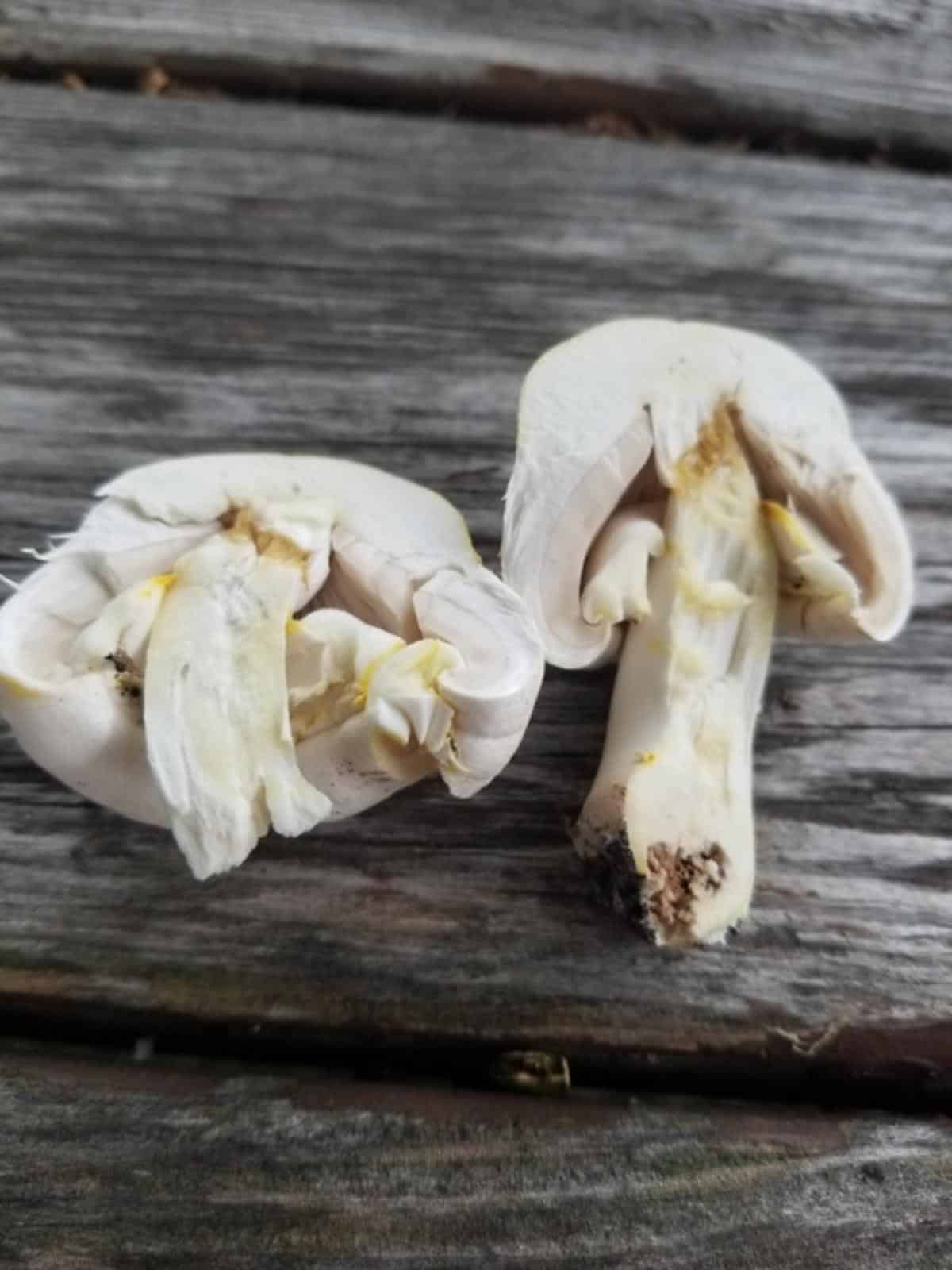
Destroying Angel [Amanita bisporigera (east coast) & Amanita ocreata (west coast)]
Destroying angels are all white, just like the horse mushroom, which causes lots of confusion. You do not want to confuse these, though. As the common name suggests, the destroying angel is not just toxic; it can also be deadly.
There are several key differences between the horse mushroom and destroying angel, so pay close attention, and you won’t have any difficulties. The destroying angel has a white sac at the base, the volva. As it grows, the fruiting body breaks through the white sac, leaving remnants around the stem. So, even though it has the same skirt around the stem, the destroying angel has a telltale white egg sac volva around the base. You may have to dig in the dirt to see it, but it is unmistakable.
They do not smell of anise, like the horse mushroom, which is also key. Additionally, destroying angels have white gills, not pink or brown, and a white spore print. If you are ever in doubt, a spore print will be of great help.
This guide to identifying Amanita species is a great starting place to learn the differences so you don’t make any toxic mistakes.
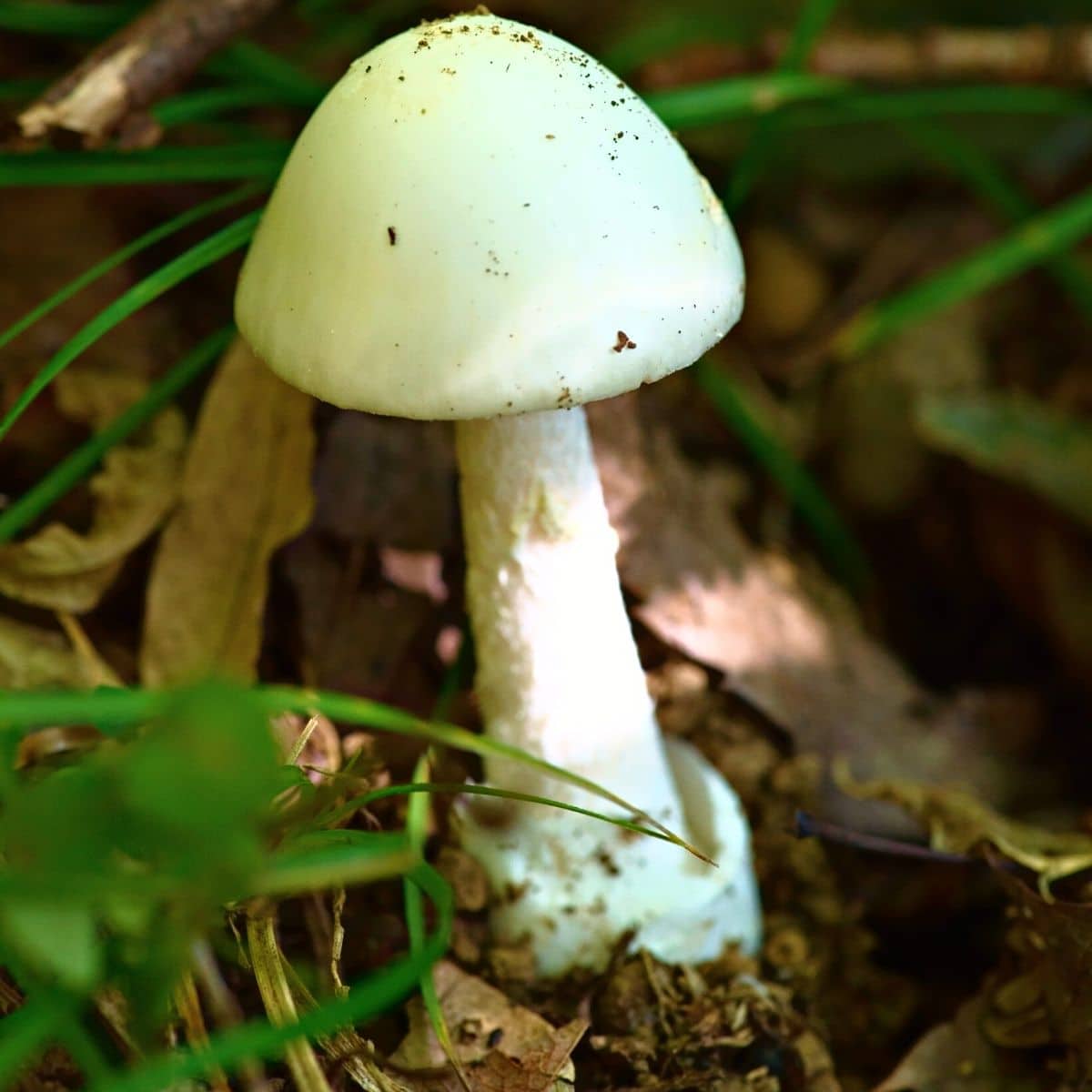
California Agaricus (Agaricus californicus)
This cousin of the horse mushroom is all white, stains yellow, and shares all the same features. It is also toxic to most people. Some folks report eating it without issue, but it causes terrible gastrointestinal issues for others, so it’s best to avoid this one.
California Agaricus specimens don’t smell like anise; instead, they have a slight iodine-like scent. Also, they only grow in California and central Mexico, so you only have to worry about this species if you live in those areas.
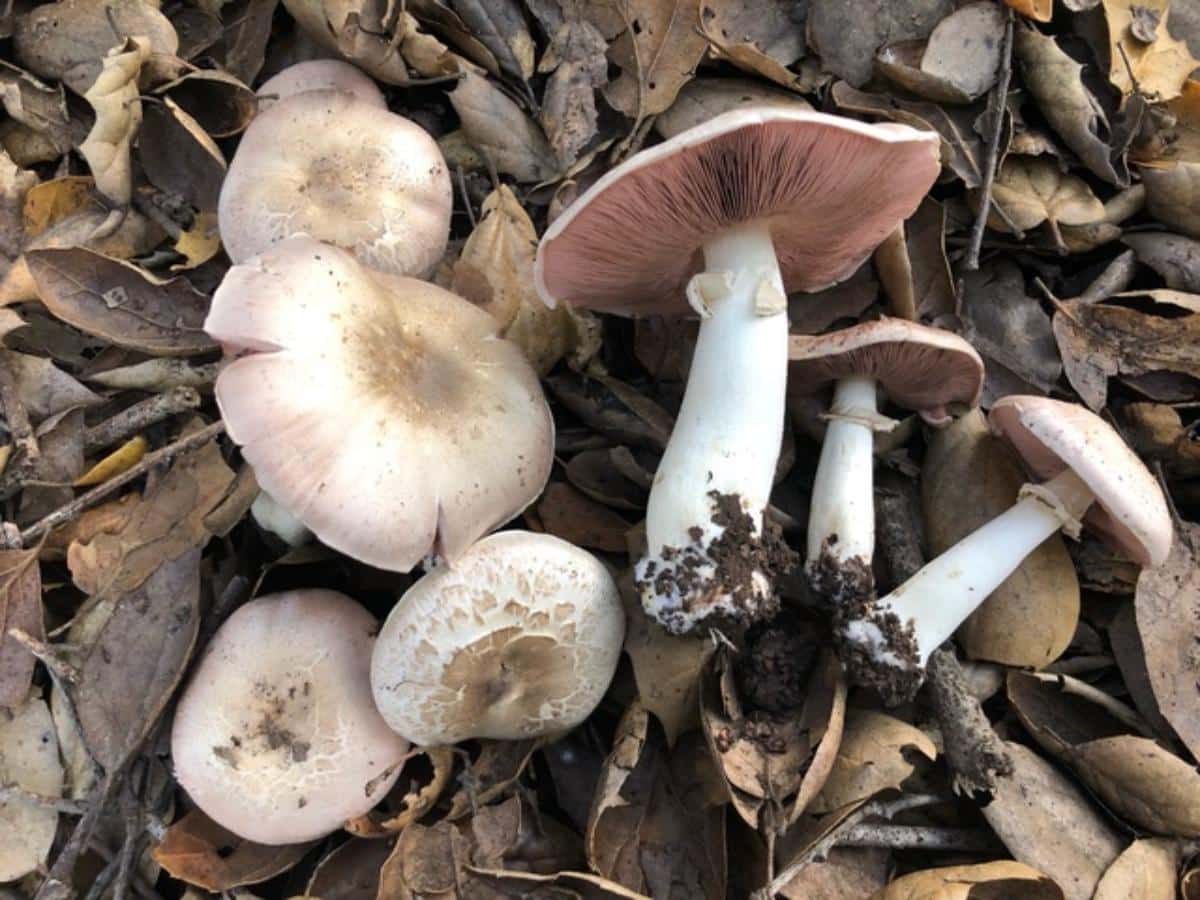
The Other Horse Mushroom (Agaricus fissuratus)
Like the “original” horse mushroom, Agaricus arvensis, this species is white with pink or brown gills, stains yellow, has a white cog-wheel-like ring around the stem, and grows in grassy areas like lawns and meadows. At first glance, telling these two apart is challenging. Thankfully, this species is also edible!
The primary difference is the smell. The horse mushroom, A. arvensis, smells like anise, while this other almost identical species smells like almonds. If you don’t have a good sniffer, you might have problems discerning between these two. Unless you have a microscope.
Another difference is that this horse mushroom frequently develops whitish-yellow scales (fissures) in the very center of the cap at maturity. It often looks crusty, like a loaf of good bread.
Until quite recently, mycologists lumped the two similar-looking species together, calling them all the horse mushroom. There is still research to be done to sort out the species, but for now, this is “the other horse mushroom,” even though it may actually be the true horse mushroom, and we’ve just been mixing everything up.
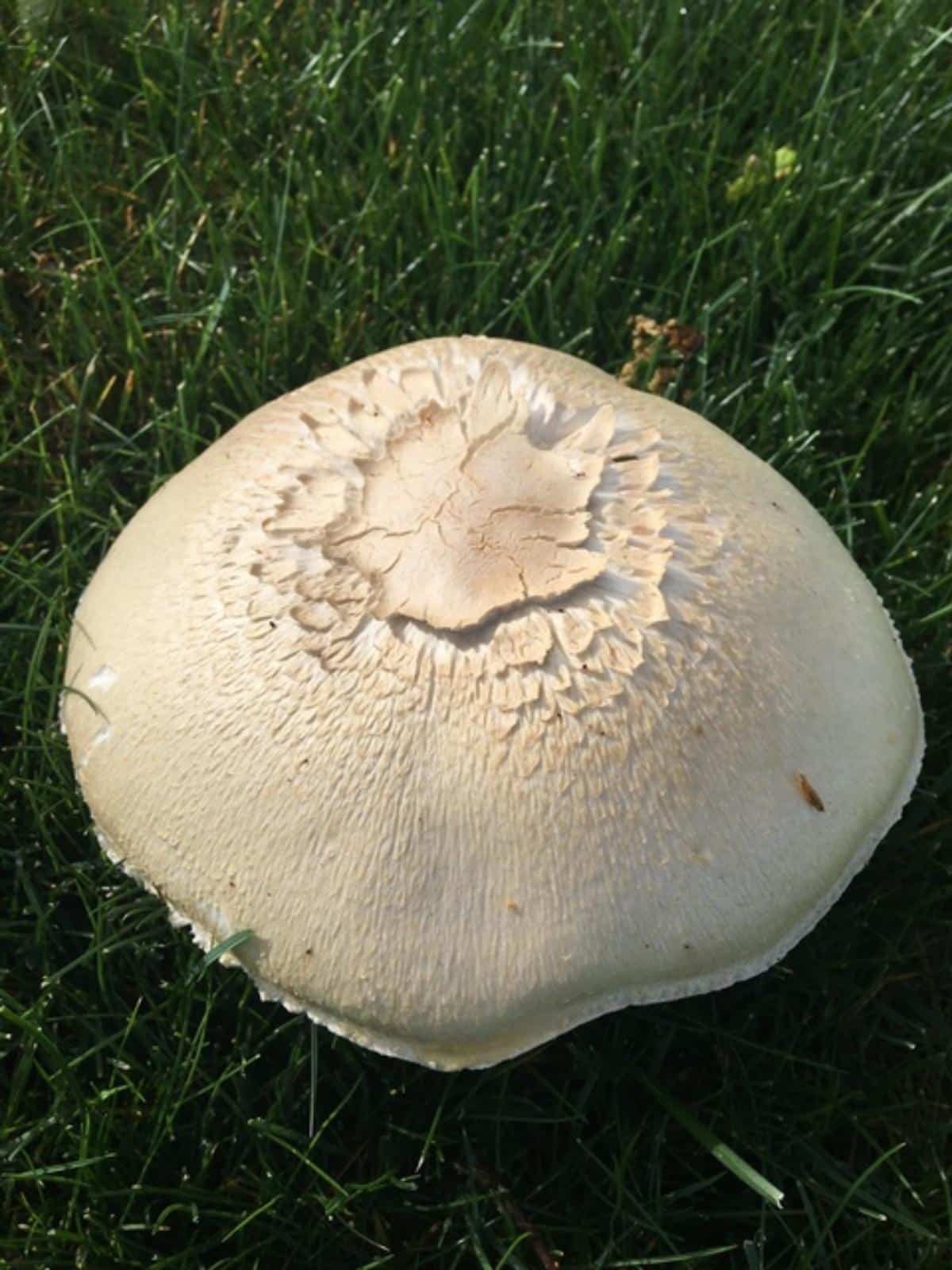
Meadow Mushrooms Group (Agaricus campestris and associated)
Like the horse mushroom, the meadow mushroom has a white cap and grows in meadows, lawns, and pastures. The meadow mushroom grows on almost every continent and is an excellent edible mushroom. When young, meadow mushrooms have pink gills and are usually smaller than the horse mushroom. A key difference is that they don’t smell like anise and they don’t stain yellow when handled.
Meadow mushrooms are widespread in North America, and there is a lot of confusion around this species group. The “real” meadow mushroom is Agaricus campestris, which biologists called many species that looked like it. Recent discoveries show that most of the meadow-mushroom-like species on the east coast are not Agaricus campestris. It is likely, though, that foragers and guides will still identify very similar species colloquially as the meadow mushroom.
Agaricus porpphyrocephalus var. pallidus, Agaricus andrewii, and Agaricus argenteus are all part of the meadow mushroom group. Telling them apart requires a microscope and spore examination.
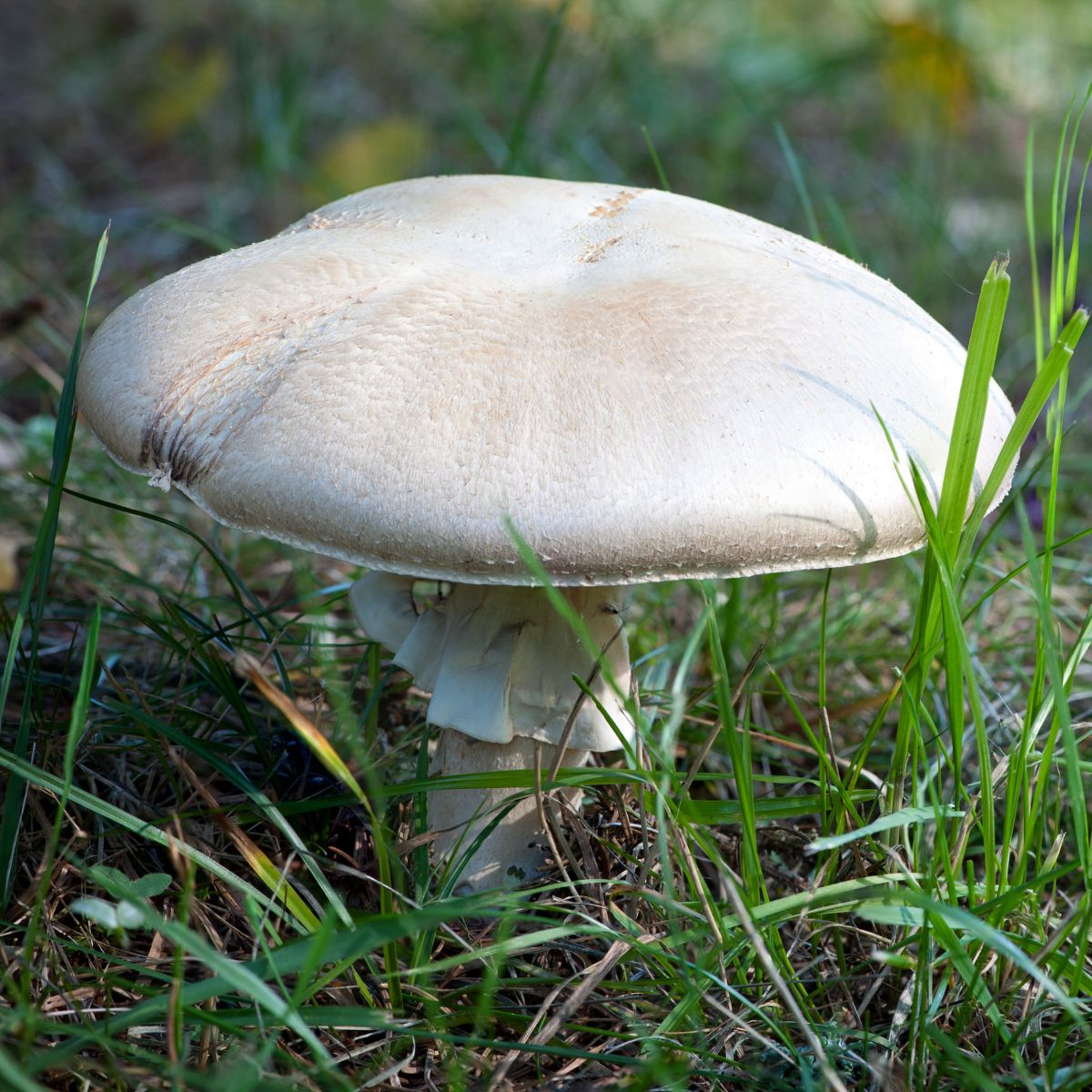
Wood Mushroom (Agaricus silvicola)
The wood mushroom looks quite similar to the horse mushroom, with a few primary differences. The wood mushroom, as the name implies, grows in the woods. This is a different habitat from the horse mushroom. It is also a bit smaller than the horse mushroom, but the habitat is the main differentiator. Wood mushrooms are edible.
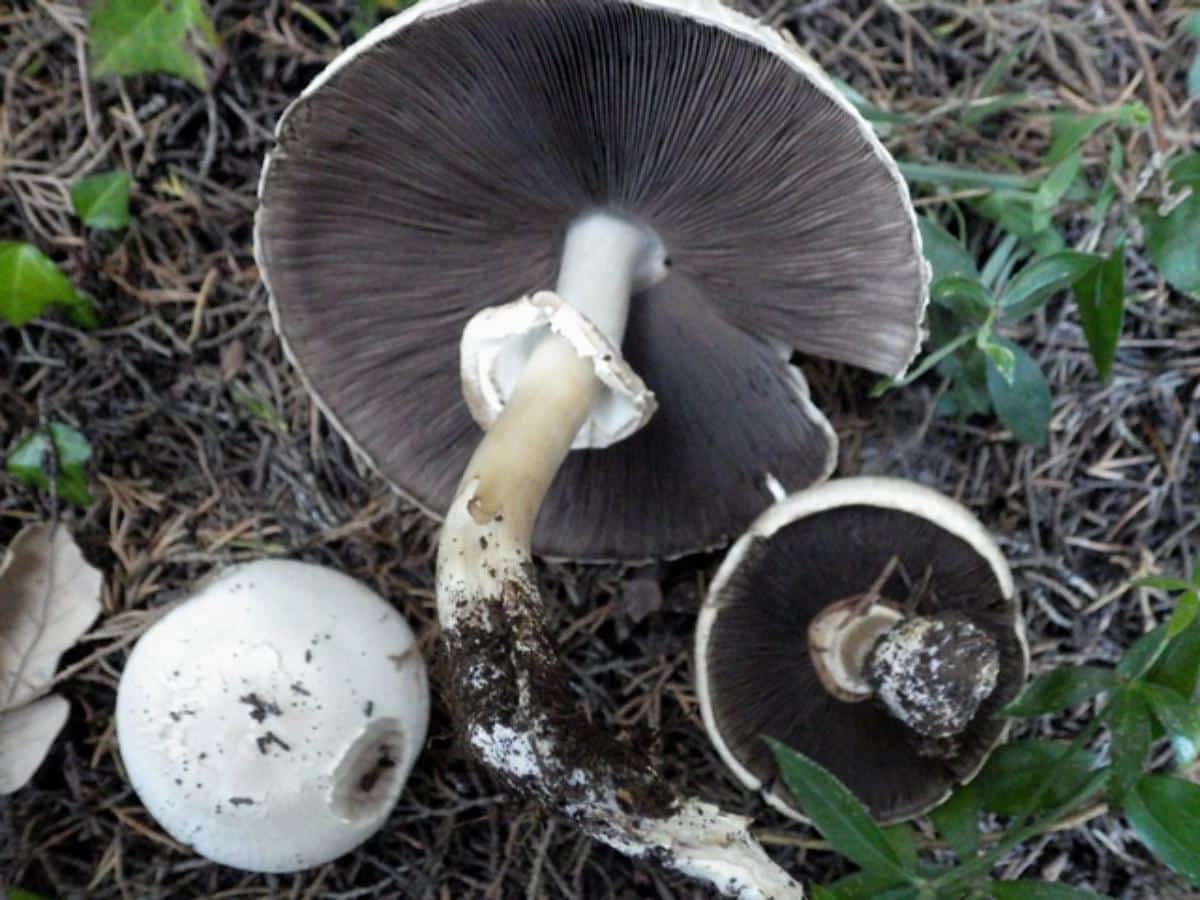
Spring Agaricus (Agaricus bitorquis)
Spring Agaricus fruits in spring, the opposite of the fall horse mushroom. And it doesn’t smell like anise; instead, it has a mild or nonexistent odor. The skirt on the stem of the Spring Agaricus is distinctive, as well. It is a double ring, with a thick upward-facing ring and a thinner lower ring.
In all other features, it looks very much like the horse mushroom with a white cap and stem, pink or brown gills, and grows on disturbed land. It seems to get a kick out of pushing through pavement.
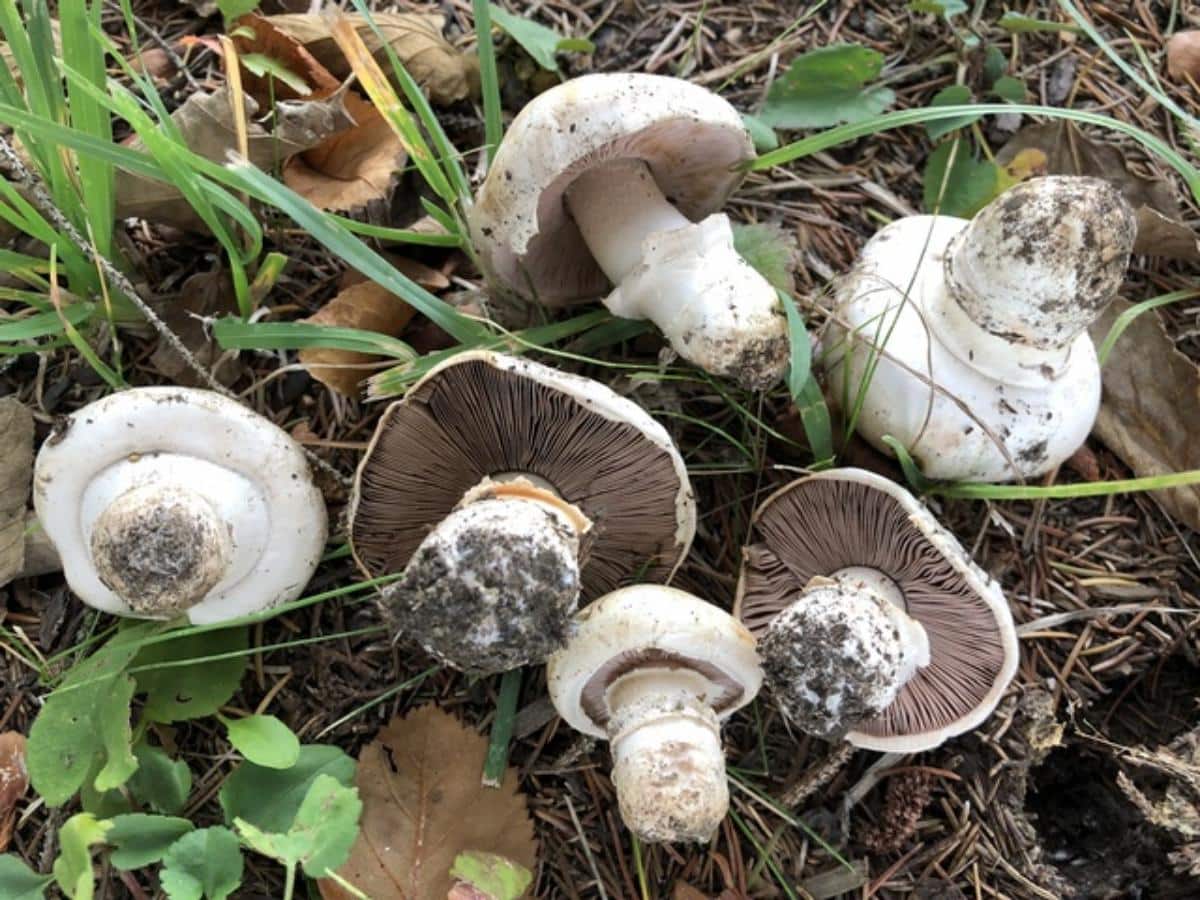
Cooking With Horse Mushrooms
Use horse mushrooms in any recipe calling for portobello or button mushrooms. It is a very adaptable culinary mushroom with a mild mushroom flavor. Horse mushrooms work wonderfully in stir-fries, pasta sauces, omelets, pizzas, risottos, and soups. They can be baked, broiled, fried, grilled, sauteed, or roasted.
The entire mushroom can be eaten, but the stems might be pithy or tough. The caps are the best part. This mushroom is great for dehydrating, which is good because you often find way more than you can prepare in one meal.
Horse Mushroom Recipes:
- Stuffed and Baked Horse Mushrooms
- Baked Horse Mushroom Stuffed with Mushroomy Tapenade
- Horse Mushrooms Stuffed With Sweet Cicely
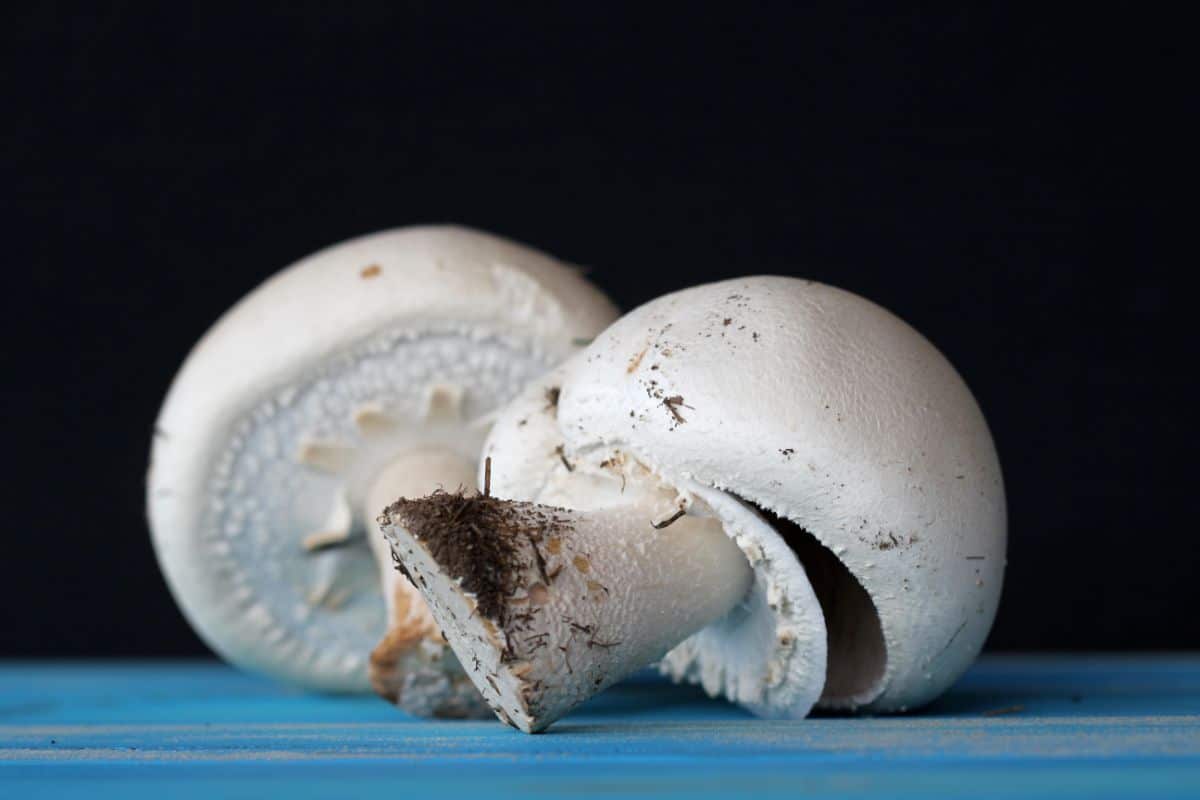
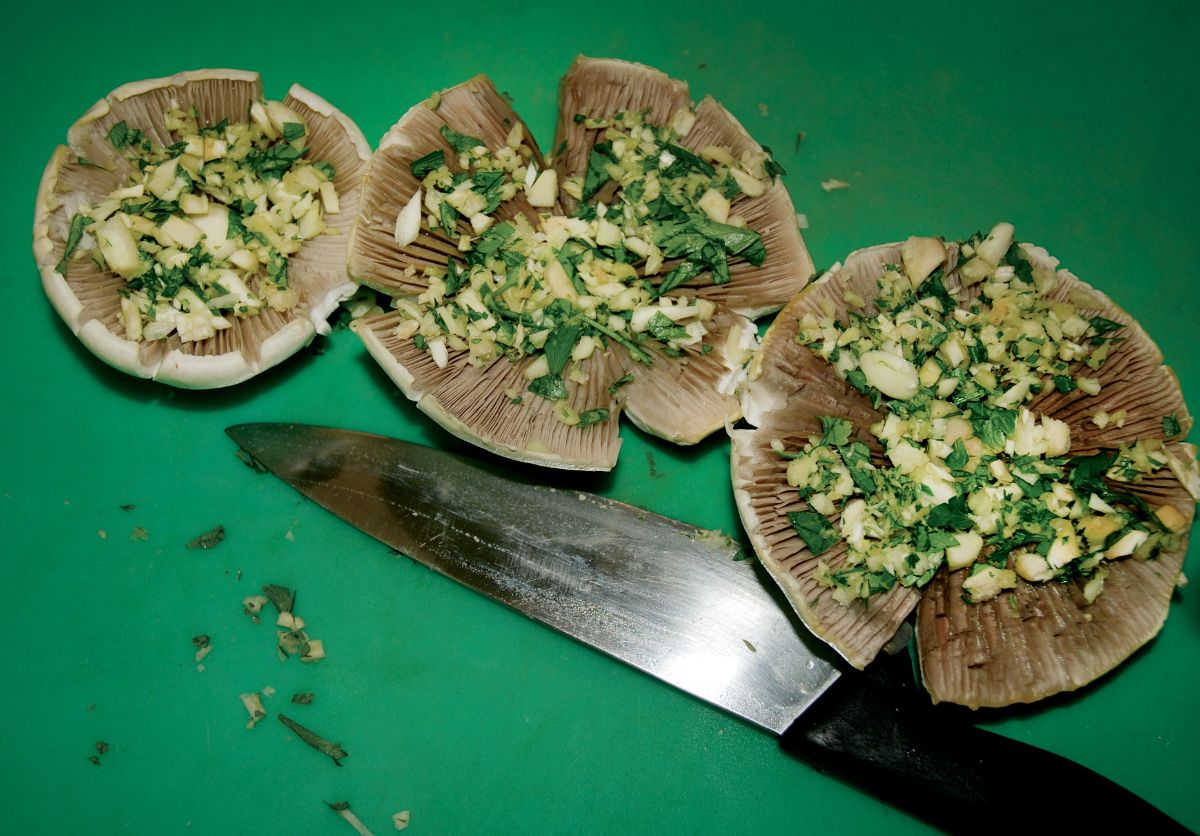
Horse Mushrooms Common Questions
Can I grow horse mushrooms?
Yes! Horse mushrooms have been cultivated for a long time. Before the common button mushroom (Agaricus bisporus) took over, it was possible to find the horse mushroom sold in markets. You may have to search a bit to find spores or spawn, as it’s not a hugely popular species with the home grower.
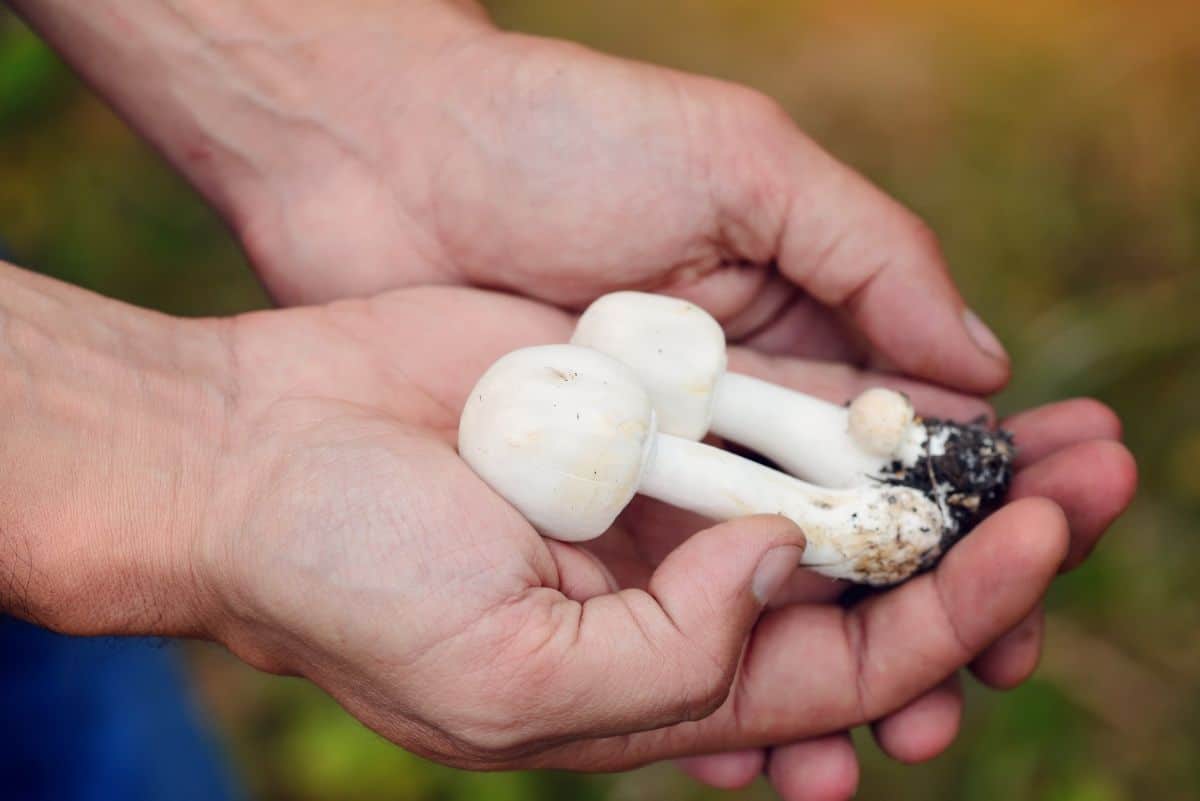

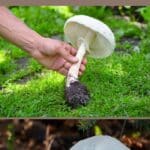
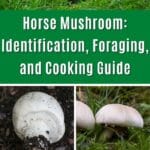
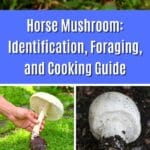
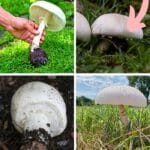
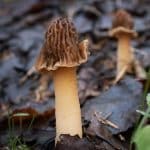
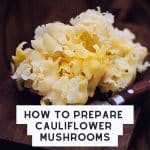
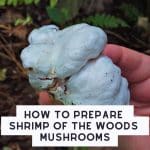
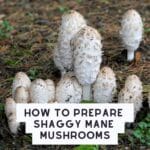
Emery Brown says
My grandparents and I would forage for horse mushrooms in fields here in California when I was a small boy ( I am now 71 ). They had foraged back in Austria as kids. My grandmother made the most delicious mushroom soup from them that I cannot make anymore because I can’t find these mushrooms anywhere and button mushrooms are a pale substitute. Can you tell me if there is anywhere I can buy them?
Wonderful site
Thank You
Emery
Jenny says
That is an amazing memory! I don’t know where you can buy horse mushrooms…maybe connect with local foraging groups in your area. Or check out farmers markets